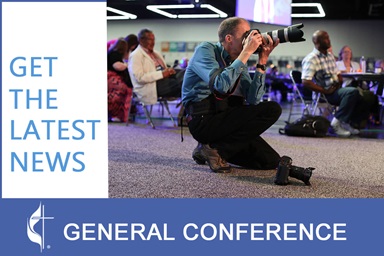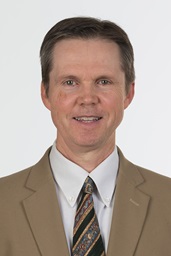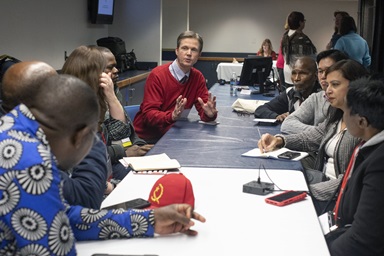In rural Nepal, the number of casualties from the April 25 earthquake was lessened by the fact that many people were outside of their homes when the disaster occurred, reports a United Methodist missionary couple who are based there.
Dr. Lester Dornon and Debbie Dornon, missionaries with the United Methodist Board of Global Ministries, have been in the United States on home assignment since last month but have been in touch with family, colleagues and friends in Nepal since the earthquake occurred.
The fact that the earthquake struck at noon on a Saturday lowered the casualty count in rural villages, the Dornons said.
“The traditional home is a mud home with not much lighting and small windows,” Lester Dornan explained. “If the weather is nice, people go outside during the day. I think that saved a lot of people in the villages.”
To Donate
Donations to support the response to the earthquake in Nepal and other international disasters can be made online through UMCOR Advance # 982450. Checks also can be made out to your local United Methodist church. Write UMCOR Advance #982450 on the memo line and put in the offering plate.
Four days after the earthquake, however, the death toll has risen beyond 5,000 and emergency needs of food, water and shelter remain dire. The United Methodist Committee on Relief is working with the United Mission to Nepal and other local and international partners to help respond to the need.
Statistics compiled through the U.N. Resident Coordinator’s Situation Report estimate 8.1 million people in need of humanitarian assistance in Nepal and 3.5 million in need of food assistance, with more than 10,000 injured.
On Instagram and Facebook, the Nepal Photo Project has helped document what life has been like since the earthquake.
 TWEET THIS
TWEET THIS
Timing helped lower death toll
In Kathmandu and other cities, the houses are taller and people tend to stay inside more, factors that contributed to the loss of life there, Lester Dornan said.
The Dornans first served in Nepal from 1990 to 2002, then returned in March 2012 to Tansen Hospital run by United Mission to Nepal, where he is the senior physician and she is coordinator of expatriate services.
The couple’s youngest daughter, Hannah, currently is volunteering as a music teacher at the Katmandu International Study Center, a school started by missionaries. She happened to be at the school when the earthquake occurred, her mother reported.
Some 200 to 300 people lived in tents or under other temporary shelters in the school’s courtyard but many have moved back inside as the aftershocks and tremors have diminished.
“Most schools in the valley are closed for the week,” she added. “I don’t know what the long-term prognosis will be.”
The back wall of the center’s auditorium building fell in and will have to be rebuilt and the foundation of the guesthouse where their daughter lives has cracked, so she is staying elsewhere for now.
Video report from act alliance
Watch a short video of Erik Johnson, emergency coordinator of ACT Alliance member Danchurchaid, reporting from a food distribution in a school in Jharuwarashi in Lalitpur - 45 kilometers outside Kathmandu.
Food, drinkable water and shelter remain a critical concern for all.
Contamination and electrical outages have contributed to the clean water shortage. “Most people have water that is in underground tanks,” Debbie Dornon explained. “But in order to pump it up to use it, you have to have electricity. None of the water is safe to drink. You have to boil it or put it through a filter.”
Nepal’s weather ranges from year-round snow in the highest mountains to a tropical feel on the border with India, Lester Dornon said. Although most of Nepal is fairly warm now, “shelter still is important” for cold evenings and thunderstorms.
Tansen hospital was undamaged
Methodists were among the founders of the United Mission to Nepal, which established Tansen Hospital in 1954. The165-bed facility for general medical and surgical care has a staff of 400, including 10 to 12 missionaries.
The hospital is one of six projects in Nepal supported by The Advance of The United Methodist Church, a voluntary giving program.
Because of the hospital damage in Kathmandu, Lester Dornon expects some medical care to be transferred to Tansen Hospital, which is a nine-hour bus ride away on a curvy but paved road.
Reaching rural areas will be more difficult. “Getting help to the people where they are is going to be an issue,” Lester Dornon acknowledged. He noted that medical camps are being organized in more remote districts to deal with ongoing complications from earthquake-related injuries.
Tansen Hospital sent two doctors to Gorkha, near the earthquake’s epicenter, and will send an orthopedic team to assist Anandaban, a mission hospital in the Kathmandu valley.
Bloom is a United Methodist News Service multimedia reporter based in New York. Follow her at https://twitter.com/umcscribe or contact her at (646) 369-3759 or [email protected]
Like what you're reading? Support the ministry of UM News! Your support ensures the latest denominational news, dynamic stories and informative articles will continue to connect our global community. Make a tax-deductible donation at ResourceUMC.org/GiveUMCom.






